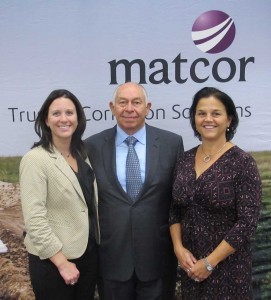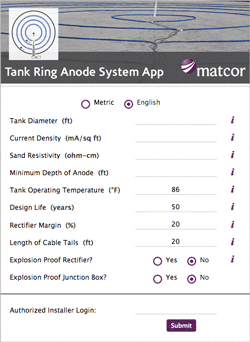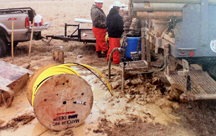The crude oil that is pulled from Canada’s oil sands is thick and heavy, a black tar-like substance that takes large amounts of energy and effort to make into end products like gasoline and diesel. Even some people in the Alberta energy industry describe it as “nasty” stuff.
But is it also dangerous?
Over the past few months, critics of the oil sands have taken a new tack. They are now arguing that oil sands crude, which contains more contaminants than traditional sources of crude, poses a risk to pipeline safety – and they’ve linked the recent spate of North American oil pipeline spills to what they say is the corrosive content of oil sands products.
It’s an argument that began with environmental groups, but has now been taken up by legislators. Last week, for example, Alcee Hastings, a U.S. Democratic congressman, warned that “the risk of an oil spill from these tar sands pipelines is very real.”
“The oil eats away the pipelines, compromising them and leading to frequent spills,” he said during a debate on the proposed TransCanada Corp. Keystone XL pipeline, which will bring oil sands crude to the U.S. Gulf Coast if it is approved. That echoes a February report from the Natural Resources Defense Council, an influential U.S. environmental group, which called oil sands crude a “highly corrosive, acidic, and potentially unstable” substance that “may be putting America’s public safety at risk.”
That conclusion has always been contradicted by industry, which has maintained that oil sands crude is safe. TransCanada, for example, has argued that it simply would not place at risk its $13-billion Keystone line by filling it with a dangerous substance. Yet the debate highlights the political obstacles that exist for the project, a crucial piece of infrastructure for getting the ever-rising volume of Alberta oil to market.
The two sides have left little middle ground between them. So who is right?
Interviews with academics, engineers and federal officials make clear that oil sands crude does indeed appear to pose additional risks. But those risks are largely borne by refineries that have had to deal with a dirtier and more corrosive substance than industry has been accustomed to.
In pipelines, independent sources suggest that the danger is substantially lower. Indeed, in decades past, thick bitumen was actually used to coat pipelines as protection against corrosion. And pipelines are partly shielded by the fact that they operate nearer room temperatures. Refineries, in contrast, process crude at up to 400 degrees Celsius, and the fierce heat promotes a series of chemical interactions that don’t happen at lower temperatures.
The corrosion question largely surrounds the properties of diluted bitumen, also called “dilbit.”
Oil sands producers generally produce two different products. One, “synthetic crude,” has passed through a sort of pre-refinery, called an upgrader, to transform it into a lighter substance that contains far fewer impurities. Dilbit comes from producers that don’t run upgraders. Instead, they take the oil sands crude and, with minimal processing, thin it with a lighter oil and pump it into a pipeline. As a result, it contains far higher levels of numerous noxious substances, including sulphur, acids, salts and sediments.
That in itself has raised some concerns.
Take sulphur, for example. Oil sands crude contains sulphur levels up to 10 times higher than other oil. But in dilbit, the sulphur is locked up with heavy oil molecules. As a result, it is largely harmless inside a pipeline, said Harvey Yarranton, a professor of chemical and petroleum engineering at the University of Calgary.
“You’d have to put it into reaction temperatures to release that sulphur – and those are above 300 Celsius,” he said.
Acids and salts are also found in substantially elevated levels in dilbit. But both substances are “not corrosive under pipeline conditions,” according to Natural Resources Canada, whose researchers have studied the corrosiveness of different oils. Acids need temperatures above 200 Celsius for corrosion to occur, the government said in a statement.
One area of concern remains sediments – little bits of sand that are embedded in oil. Industry measures these in pounds per 1,000 barrels. Conventional oil might measure 30 to 50 pounds per 1,000 barrels. Scott Bieber, a marketing manager with oil field services giant Baker Hughes Inc., has seen oil sands bitumen hit 500.
Sediments can contribute to corrosion in pipelines – and they have become a significant menace in refineries, where they have proven difficult to remove and help foul wastewater, Mr. Bieber said.
And environmental critics say that with the expansion in the oil sands, more study needs to be done of the effects dilbit has on pipelines. In particular, the thickness of oil sands crude – it’s far more viscous than conventional oil – creates friction inside pipelines that creates higher temperatures.
With Keystone XL, TransCanada has predicted temperatures as high as 55 Celsius. That remains far from the heat in a refinery, but higher temperatures do speed corrosion, and Anthony Swift, an energy analyst with the National Resources Defense Council, said governments both in Canada and the U.S. should take notice.
“There’s enough information out there about [the risks of] this stuff that merits a study,” he said. “The government should be protecting the public, and it’s a huge concern when they turn a blind eye to a potential danger.”
SOURCE: http://www.theglobeandmail.com/report-on-business/industry-news/energy-and-resources/oil-sands-critics-target-a-new-concern-pipelines/article2116408/

 In 1975, William R. Schutt founded MATCOR, setting out to develop a high quality, reliable source for cathodic protection products and equipment. That same year, the company designed and provided the first commercial cathodic protection system for reinforced concrete bridge decks. Today, Mr. Schutt serves as MATCOR’s Chairman.
In 1975, William R. Schutt founded MATCOR, setting out to develop a high quality, reliable source for cathodic protection products and equipment. That same year, the company designed and provided the first commercial cathodic protection system for reinforced concrete bridge decks. Today, Mr. Schutt serves as MATCOR’s Chairman.






